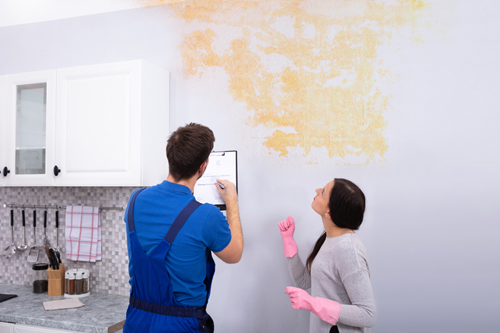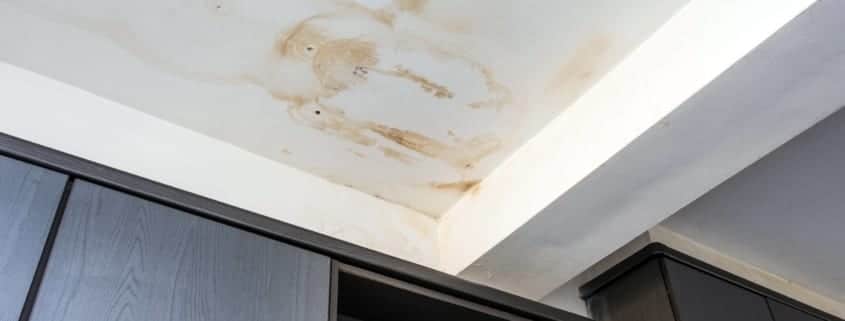A Deep Dive Into Water Stains On Walls - Detection And Repair Techniques
Additional InformationWhat're your opinions about Indicators of Water Damage Behind Walls?

Water spots on wall surfaces are not pleasant to the eyes. In some cases it appears almost inescapable to experience water discolorations on walls in residences.
Property owners living in moist areas constantly deal with the fear of water stains on wall surfaces. With well-shaped and accurate information on the causes of water spots and also timely repair service procedures, you will certainly always be a step in advance of such occurrences.
3 Common Reasons For Water Spots on Wall Surfaces
Unlike popular belief, water stains on walls do not always come from inadequate structure products. There are numerous causes of water stains on walls. These include:
Moist
When warm damp air consults with completely dry cool air, it creates water beads to base on the wall surfaces of structures. This occurs in restrooms and cooking areas when there is vapor from food preparation or showers. The water droplets can stain the bordering walls in these parts of your residence as well as spread to other locations.
Wet or condensation impacts the roofing system and wall surfaces of structures. This triggers them to appear darker than other locations of the home. When the wall surface is wet, it develops a suitable environment for the development of microorganisms and fungis. These may have adverse effects on wellness, such as allergic reactions as well as breathing disorders.
Poor Water drainage
When making a structure plan, it is crucial to make certain sufficient water drainage. This will certainly avoid water from seeping right into the walls. Where the drainage system is obstructed or nonexistent, underground dampness develops. This links to too much dampness that you notice on the wall surfaces of your building.
The leading reason of wet wall surfaces, in this case, can be an inadequate water drainage system. It can also be because of poor administration of sewer pipes that run through the structure.
Pipeline Leaks
Many residences have a network of pipes within the walls. This ensures that the pipelines are well away from the reach of harmful rodents. It constantly increases the feasibility of such pipelines, as there is little oxygen within the walls. This inhibits rust.
Yet, a disadvantage to this is that water leakage impacts the wall surfaces of the structure and triggers extensive damages. An indicator of faulty pipes is the look of a water tarnish on the wall.
Pro Idea
A houseplant in your house also boosts its moisture. So, if the house is already damp, you might want to introduce houseplants with very little transpiration. An instance of ideal houseplants is succulents.
Water Discolorations on Wall: Repair Service Tips
When dealing with water discolorations, homeowners would typically want a fast solution. Yet, they would soon realize this is detrimental as the water spots reoccur. Below are a couple of practical ideas that will certainly assist you in the repair work of water spots on walls:
Conclusion
No one wants to have water discolorations on wall surfaces in their house, it can happen to the best of us. This write-up offers you take advantage of, as you now recognize exactly how to handle this incident if it does happen.
It is always best to hire expert solutions to assist repair the problems in your house.
Sometimes it appears practically inescapable to experience water stains on wall surfaces in residences.
Contrary to popular idea, water spots on walls do not constantly stem from bad building materials. There are a number of causes of water discolorations on walls. The water droplets can discolor the surrounding wall surfaces in these components of your home and also spread to various other areas.
Below are a few handy ideas that will certainly guide you in the fixing of water stains on wall surfaces:
CHECKING FOR WATER DAMAGE
Water damage can be costly, and it may begin before you even notice the first signs of trouble. Water damage can cause mold and mildew in your walls and floors, which can create an abundance of health concerns for your family. It can also lead to costly repairs of various appliances and general home fixtures. To avoid the pricey consequences of water damage, here are Warner Service’s top 5 places you should check:
The walls – The easiest place to spot the beginnings of water damage is on the walls and ceilings of your home. If water damage is present, there will most likely be water stains, especially around the windows and doorframes, and/or cracks in the drywall. If a stain looks unusual (discolored to brown, black or gray, raised texture), has a swollen appearance or is soft to the touch, contact a professional immediately. The pipes – To avoid water damage, consistently check the pipes in your kitchen (especially the dishwasher and ice maker), bathrooms, laundry room (specifically washing machines) and basement for corrosion, leaks and water stains. Pay special attention to where the pipes connect in your home and the location of caulking around the bathroom fixtures, including toilets, sinks, showers and tubs. Missing or loose caulking and grout could be signs of leaking water. This seepage can also quickly cause mold and rust, so double check your water heater and tank for wet spots on the floor. The floor – Water damage is very easy to spot on the floor. Look for any warping or buckling of the material, especially in the basement. If your home has wood flooring, look for bright white or dark stains. If your home has carpeting, keep it dry and clean. A damp carpet that smells of mold could cause water damage and health problems. To avoid this, consider installing floor pans under your appliances to help prevent damages from small, slow and undetected leaks. The basement and attic – If your basement or attic smells odd check for mold and mildew around the area, especially the valley where the roof meets. While you are inspecting those areas, check for wall cracks, floor stains, rust and dampness in the insulation. If you live in a colder and/or rainier climate, perform routine checks for water damage from melting snow or ice and rain. The exterior – Check the roof for damaged flashing and missing, cracked or curled shingles. There should also be no standing water anywhere outside your home. This could be caused by puddles, leaky rain gutters or hoses, poor drainage, or short gutter spouts. Invest in a sump pump system or water flow monitoring system, and perform routine maintenance on these outdoor appliances to avoid indoor water damage.

I'm just very interested by Indicators of Water Damage Behind Walls and I am assuming you enjoyed the entire article. Sharing is nice. Helping others is fun. Thanks for your time spent reading it.
Source This Article